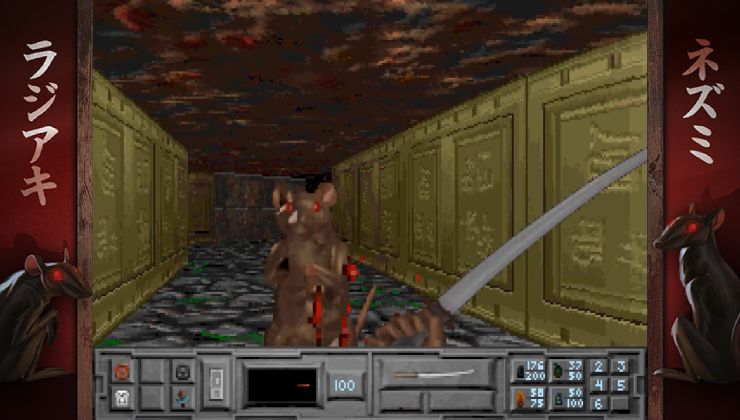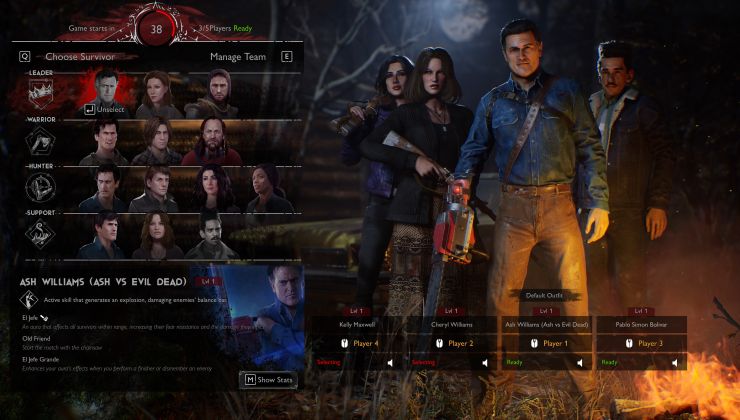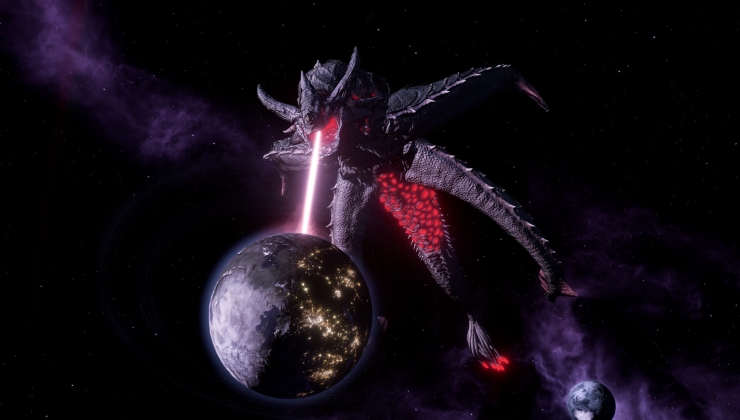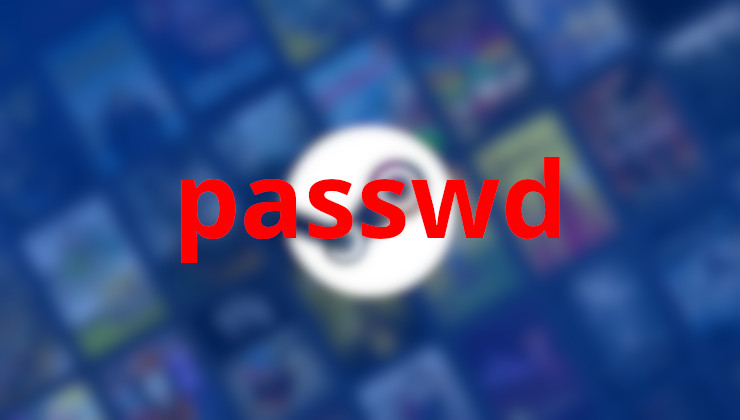Return to Part 1: Dumpster Diving
Continued from Part 27: Lost Souls
One of the titles that Loki Software released for Linux was Tribes 2, an online multiplayer shooter which was the first game to be released using the Torque Game Engine. Torque 3D would go on prove to be a favourite of a number of independent developers over the next decade, with the engine's maintainer GarageGames stepping in to distribute several of the games produced with it for Linux themselves. This included a game of their own devising, Marble Blast Gold.
Marble Blast was first released in 2002, before being updated to Marble Blast Gold in 2003. A six level playable Linux demo was released through the MarbleBlastGoldDemo-1.4.1.sh.bin installer. The goal of the game is to navigate an autonomous marble through a 3D playing world, collecting all of the gems needed and using the power ups provided to overcome the obstacles preventing you from progressing on to the next level.
Anyone who has ever played the free software title Neverball should be familiar with the basic concept, the main difference being that with Marble Blast you control the marble directly, rather than shifting around the floor to roll a ball. These kinds of high reflex games have a way of trying both my nerves and patience before long, but the appeal sure is there for some. The graphics are bright and colourful, while the music and narration remain jovial.
To its credit Marble Blast Gold and the Torque Game Engine powering it do run rather well, even on a computer which would have been well into its operating life by the time the game came out. Marble Blast Gold stayed performant even when set to display at higher screen resolutions such as 1024x768 or when using 32 bit colour depth; the only exception being enabling Stencil Shadows, which does hammer the frame rate something fierce.
I also find the selection of levels in the demo to be puzzling. I would have just included all of the early beginner levels, which introduce all of the mechanics before letting you tackle your first real challenge. The demo can also be a bit obnoxious, with it showing a begging screen imploring you to buy the full game after completing each and every level. Considering the state of the registered version as it exists now, this can feel more than a bit galling.
Marble Blast Gold never saw a retail release, with it just being sold as a digital download through the GarageGames website. The game has been unavailable for purchase since being removed from their store in 2011, and even if you had purchased the full version back in the day, you can no longer verify your key as the registration server is down. While both Windows and Mac saw versions which had the Ignition DRM stripped out, on Linux the game is left unplayable.
Thankfully the Marble Blast community has provided Linux users with a couple of alternate ways to keep playing the game. Marble Blast Web is a port of both Marble Blast Gold and the community made Marble Blast Platinum that allows both games to launch inside a modern web browser. While appearing almost identical, the physics are actually quite different to those found in the original game, having been optimized instead with a view to reaching a wider audience.
A more faithful web version of the game is the Marble Blast Haxe Port, which boasts 99% identical physics, although it gave me some issues with inputting my name. Either gives you access to what amounts to the full version of the game along with full source code available from GitHub, both being the product of clean room reverse engineering. Some interest has even been shown in using these to make new native Linux binaries, but the web versions are more universal.
GarageGames sold alongside Marble Blast Gold another ten games for Linux on their website, including Bridge Construction Set, Orbz, ThinkTanks, Gish, Dark Horizons: Lore Invasion, Zap!, Tribal Trouble, Toribash, FizzBall, and Kachinko, almost all made with the Torque Game Engine. Following the closure of their store in 2011 GarageGames would at least open up the source code to Torque, allowing the engine to continue to enjoy success in Indie and free gaming circles.
The more I explore these early independent Linux games that were distributed and sold through the internet, the more dismayed I have become at how easily they seem to be succumbing to the digital dark age without a physical release to anchor them. Thanks to a tip from one of my readers however, and the help of the original developer, I can now shine a light on another title which otherwise would appear to have been lost to history.
Carrying on in Part 29: The Odyssey
Return to Part 1: Dumpster Diving
[https://marbleblast.com/index.php/downloads/mbg/download/28-marble-blast-gold/13-marbleblastgolddemo-1-4-1-sh](https://marbleblast.com/index.php/downloads/mbg/download/28-marble-blast-gold/13-marbleblastgolddemo-1-4-1-sh)
Marble Blast Web can be played here:
[https://marbleblast.vani.ga/](https://marbleblast.vani.ga/)
The Marble Blast Haxe Port can be found here:
https://github.com/RandomityGuy/MBHaxe
GarageGames was one of the pivotal companies for Linux users.
I hope that they publish the official DRM-free version of Marble Blast for Linux in the near future.
I want to point that out that one the of the games that used Torque 2D Engine was Galacticards from Killer Bee Software:
http://www.killerbeesoftware.com/kbsgames/gc/
Last edited by gbudny on 6 Mar 2023 at 8:13 pm UTC
Have you, or are you going to do an article on Myth II? I fould that with it you can make GURPS stuff (from GURPS Myth).
Anyhow, love this series, makes me want to try on one of the old PCs I built recently.
Anyhow, love this series, makes me want to try on one of the old PCs I built recently.
I hope that more users start to build old PCs to play games for Linux.
I saw the AGP graphic cards like GeForce 7950 GT 512 MB or even 8400 GS 512 MB. My GeForce 7300 GT 512 MB isn't terrible. However, I like to see some room for the performance improvements in some games.
Last edited by gbudny on 6 Mar 2023 at 9:54 pm UTC
Have you, or are you going to do an article on Myth II?Yep, I do have Myth II and I do intend to cover it at some point. It's funny though, I built the computer with the idea of playing Loki games in mind, but instead I have kept diving down all these other Linux native rabbit holes, as they seem more at risk of disappearing from the internet.
This is going to be the last article for awhile as I have burned through the topics I had stockpiled, and I need to switch my focus to the farm as I will be calving and lambing before long. More instalments will come as I finish them, but they will not be every week. Hope you all enjoyed the ride.
I need to switch my focus to the farm as I will be calving and lambing before long.Isn't that something the cows and sheep should do?

Says a dude named TheSHEEP. HahahaI need to switch my focus to the farm as I will be calving and lambing before long.Isn't that something the cows and sheep should do?

I have several Marvel G400TV cards, I am planning on going a different route with productivity on old PCs. Granted originally I wasn't thinking of using Linux...Anyhow, love this series, makes me want to try on one of the old PCs I built recently.
I hope that more users start to build old PCs to play games for Linux.
I saw the AGP graphic cards like GeForce 7950 GT 512 MB or even 8400 GS 512 MB. My GeForce 7300 GT 512 MB isn't terrible. However, I like to see some room for the performance improvements in some games.
But now that I think about it, I may very well do so.
Equipment list I'm going to be using to produce videos (when I get around to it)
Amiga 4000 Video Toaster (For old school effects)
I have two cameras that can do digital / analog for recording.
Marvel G400TV can be used for capturing some stuff (may use OBS or something and toying with doing live videos maybe?)
M1 Macbook for any post processing stuff.
For music/audio, I have an Atari Falcon+Cubase, and Logic Pro on the mac.
So my plans are really a mix of old tech+modern tech. The work flow is going to be really wacky, but fun I think.
I have several Marvel G400TV cards, I am planning on going a different route with productivity on old PCs. Granted originally I wasn't thinking of using Linux...Anyhow, love this series, makes me want to try on one of the old PCs I built recently.
I hope that more users start to build old PCs to play games for Linux.
I saw the AGP graphic cards like GeForce 7950 GT 512 MB or even 8400 GS 512 MB. My GeForce 7300 GT 512 MB isn't terrible. However, I like to see some room for the performance improvements in some games.
But now that I think about it, I may very well do so.
Equipment list I'm going to be using to produce videos (when I get around to it)
Amiga 4000 Video Toaster (For old school effects)
I have two cameras that can do digital / analog for recording.
Marvel G400TV can be used for capturing some stuff (may use OBS or something and toying with doing live videos maybe?)
M1 Macbook for any post processing stuff.
For music/audio, I have an Atari Falcon+Cubase, and Logic Pro on the mac.
So my plans are really a mix of old tech+modern tech. The work flow is going to be really wacky, but fun I think.
It looks like the interesting way of combining different computers and operating systems.
I never had a chance to use Matrox cards Linux. I watched somewhere it was tricky to install drivers back then. In my opinion, Matrox Parhelia still looks like a nice alternative for the old PCs.
Did you try to run Amix on Amiga 4000?
I know there was a version Unix for Atari:
http://www.atariunix.com/
Last edited by gbudny on 7 Mar 2023 at 8:13 pm UTC
All jests aside, they are honestly pretty good at it, but you still need to check on them at all times of the day and night just in case. I also treat umbilicals and give selenium shots among other things.I need to switch my focus to the farm as I will be calving and lambing before long.Isn't that something the cows and sheep should do?
I never had a chance to use Matrox cards Linux. I watched somewhere it was tricky to install drivers back then. In my opinion, Matrox Parhelia still looks like a nice alternative for the old PCs.Certainly by the time of Red Hat Linux 7.3 any Matrox G200 or G400 card should just work out of the box with DRI drivers. The G400 MAX would be a compelling alternative for Dianoga, but they are about as expensive as Voodoo cards are these days.
The Parhelia is its own beast entirely, but Matrox have always been good at providing long term support for their products, including on Linux.
Certainly by the time of Red Hat Linux 7.3 any Matrox G200 or G400 card should just work out of the box with DRI drivers. The G400 MAX would be a compelling alternative for Dianoga, but they are about as expensive as Voodoo cards are these days.
Thank you for the clrafication.
How good were closed source drivers for Matrox cards?
Sometimes, people sell old graphics cards for a few dollars because they think it's a piece of useless junk.
Some graphics cards don't deserve to be so popular like Geforce 4 MX 440 - they are horrible.
How good were closed source drivers for Matrox cards?I don't think there were any closed drivers from Matrox, nor was there much need for them as Mesa was in its own first golden age at the time. Only Nvidia and for a period ATI embraced binary blob drivers for Linux, which set the free graphics stack back years in the mid to late 2000s. Things are so much better again now at least with AMD and Intel.
They do ship a modified version including their own Matrox HAL library it seems though:
[https://www.matrox.com/de/video/apps/drivers/graphics/download?id=143](https://www.matrox.com/de/video/apps/drivers/graphics/download?id=143)
Sometimes, people sell old graphics cards for a few dollars because they think it's a piece of useless junk.I was working on another old computer with my brother the other week, and inside his big antistatic bag of old expansion cards was, unbeknownst to him, a Diamond Stealth II S220 (Rendition Vérité V2100) graphics card. While useless for Linux this is still a very collectible and historically significant graphics card, as the Rendition Vérité was the first series of video cards to support 3D acceleration in Quake weeks before the Voodoo did.
My brother had no idea that the card was that valuable, nor did the person who sold it to him at a flea market. It was actually part of the same $1 CAD lot of cards that my Sound Blaster 16 PnP came from.
EDIT: Not entirely useless on Linux as 2D support for the Vérité was released through the back door:
"I got on to the beta tester team with Rendition and they were constantly upgrading the drivers and making them better and faster but the manufacturers couldn't be bothered with updating their drivers ... I also got the Verite engineers to "leak" the 2D driver specs because there wasn't a way to make it work with Linux. So I tried shopping the specs around to different Linux distros (there were only a few back then) and Redhat turned me down flat and Debian did too after a few weeks but I finally got the interest of some German programmers at SUSE and they got them to work (2D only) in no time and because of the way Linux works you could download them from SUSE and they would work in Redhat or Debian or any other distro"
Source: [https://www.techspot.com/community/topics/rendition-gone-but-not-forgotten.278896/post-2010465](https://www.techspot.com/community/topics/rendition-gone-but-not-forgotten.278896/post-2010465)
This Linux Gazette issue seems to confirm that it was done through SUSE too:
[https://linuxgazette.net/issue31/gm.html](https://linuxgazette.net/issue31/gm.html)
Last edited by Hamish on 7 Mar 2023 at 11:28 pm UTC
AMIX won't run on an A4000, it requires an A2000-A3000. NetBSD / Linux will run on the 4000, but I haven't tried it there yet. I was going to try NetBSD on my Atari TT030, (which is also where the Atari SysV Unix would need to be ran) but then I accidentally wrote the tiny image over a 3tb drive of data... so got distracted restoring that! (always make sure you're writing to the right device!!)I have several Marvel G400TV cards, I am planning on going a different route with productivity on old PCs. Granted originally I wasn't thinking of using Linux...Anyhow, love this series, makes me want to try on one of the old PCs I built recently.
I hope that more users start to build old PCs to play games for Linux.
I saw the AGP graphic cards like GeForce 7950 GT 512 MB or even 8400 GS 512 MB. My GeForce 7300 GT 512 MB isn't terrible. However, I like to see some room for the performance improvements in some games.
But now that I think about it, I may very well do so.
Equipment list I'm going to be using to produce videos (when I get around to it)
Amiga 4000 Video Toaster (For old school effects)
I have two cameras that can do digital / analog for recording.
Marvel G400TV can be used for capturing some stuff (may use OBS or something and toying with doing live videos maybe?)
M1 Macbook for any post processing stuff.
For music/audio, I have an Atari Falcon+Cubase, and Logic Pro on the mac.
So my plans are really a mix of old tech+modern tech. The work flow is going to be really wacky, but fun I think.
It looks like the interesting way of combining different computers and operating systems.
I never had a chance to use Matrox cards Linux. I watched somewhere it was tricky to install drivers back then. In my opinion, Matrox Parhelia still looks like a nice alternative for the old PCs.
Did you try to run Amix on Amiga 4000?
I know there was a version Unix for Atari:
http://www.atariunix.com/
Ha, if I could find the old posts from MURC (Matrox users resource center) I wrote the howtos for installing the Parhelia drivers in Debian. :P Pretty much just required build-essentials and linux-headers-`uname -r`. Pre-Parhelia cards pretty much worked right out of the box.
I'd love to get a hold of an A3000 to run AMIX on though, looks sweet. Though out of all that era of computers, the best version of Unix was probably A/UX, as Apple integrated it with MacOS so you could run mac software and Unix stuff.
I don't think there were any closed drivers from Matrox, nor was there much need for them as Mesa was in its own first golden age at the time. Only Nvidia and for a period ATI embraced binary blob drivers for Linux, which set the free graphics stack back years in the mid to late 2000s. Things are so much better again now at least with AMD and Intel.Right, cards before the Parhelia had all the drivers open source, with a binary blob for some specific thing (I want to say hardware accelerated video decoder?) As I stated above, they had an installer for the Parhelia drivers, and they simply needed build-essentials and the linux-headers package to be installed in Debian based distributions.
They do ship a modified version including their own Matrox HAL library it seems though:
https://www.matrox.com/de/video/apps/drivers/graphics/download?id=143
Back in the day, I would use Linux and play Unreal Tournament 2004 on three 21" CRTs... it was kind of impractical as you can imagine, I'd have to lean way back to see the peripheral, but holy crap was that impressive at the time.
Sadly their hardware implementation lacked something to support Doom 3 correctly, and that ultimately killed the card (ironic as many people claim Doom, and it's lack of it on the Amiga platform is what killed the Amiga.)
http://www.murc.ws/showthread.php?44575-Parhelia-on-Linux&highlight=linux
Right, cards before the Parhelia had all the drivers open source, with a binary blob for some specific thing (I want to say hardware accelerated video decoder?) As I stated above, they had an installer for the Parhelia drivers, and they simply needed build-essentials and the linux-headers package to be installed in Debian based distributions.Thanks for the correction, I did not know about the Parhelia using a binary blob. I guess Matrox wanted to keep with the times, which in the early to mid 2000s, was whatever Team Green was doing.
Sadly their hardware implementation lacked something to support Doom 3 correctly, and that ultimately killed the card (ironic as many people claim Doom, and it's lack of it on the Amiga platform is what killed the Amiga.)And Quake killed Cyrix, so John Carmack will dig your grave.
Last edited by Hamish on 8 Mar 2023 at 6:16 am UTC
Thanks for the correction, I did not know about the Parhelia using a binary blob. I guess Matrox wanted to keep with the times, which in the early to mid 2000s, was whatever Team Green was doing.To be fair to Matrox, they had some hardware features that no one else did at the time, so keeping the source closed made sense in the 'protect our IP' sort of way. I think nvidia keeps their stuff binary just out of habit at this point, or at least I think they should open the parts of their drivers for older cards that aren't their latest cutting edge version of stuff.
Kind of shocked that back in the day when Matrox got out of the Gaming GPU business, Intel or someone didn't try to buy up their tech. Matrox still happily is making multi-display cards, and I believe one of their latest iterations is nvidia based.
Here it is; https://www.matrox.com/en/video/media/press-releases/matrox-develop-embedded-graphics-cards-nvidia-next-generation-video-walls
They do ship a modified version including their own Matrox HAL library it seems though:
[https://www.matrox.com/de/video/apps/drivers/graphics/download?id=143](https://www.matrox.com/de/video/apps/drivers/graphics/download?id=143)
This is a driver that I was thinking about.
I was working on another old computer with my brother the other week, and inside his big antistatic bag of old expansion cards was, unbeknownst to him, a Diamond Stealth II S220 (Rendition Vérité V2100) graphics card. While useless for Linux this is still a very collectible and historically significant graphics card, as the Rendition Vérité was the first series of video cards to support 3D acceleration in Quake weeks before the Voodoo did.
My brother had no idea that the card was that valuable, nor did the person who sold it to him at a flea market. It was actually part of the same $1 CAD lot of cards that my Sound Blaster 16 PnP came from.
EDIT: Not entirely useless on Linux as 2D support for the Vérité was released through the back door:
"I got on to the beta tester team with Rendition and they were constantly upgrading the drivers and making them better and faster but the manufacturers couldn't be bothered with updating their drivers ... I also got the Verite engineers to "leak" the 2D driver specs because there wasn't a way to make it work with Linux. So I tried shopping the specs around to different Linux distros (there were only a few back then) and Redhat turned me down flat and Debian did too after a few weeks but I finally got the interest of some German programmers at SUSE and they got them to work (2D only) in no time and because of the way Linux works you could download them from SUSE and they would work in Redhat or Debian or any other distro"
Source: [https://www.techspot.com/community/topics/rendition-gone-but-not-forgotten.278896/post-2010465](https://www.techspot.com/community/topics/rendition-gone-but-not-forgotten.278896/post-2010465)
Thanks for the story.
It's one of these situations. I remember that someone sold me GeForce 6200 512MB for 15 zł (= above 3 dollars). I was expecting getting a brick in the box. I got the dirt cheap graphic card, but it's still one of the weakest in the 6000 series.
It's an intersting graphic card, but problematic even on DOS:
https://www.youtube.com/watch?v=D7zADH80vQA
It's great that someone is working on the Linux driver for it.
The behavior of Debian developers is disappointing to me.
I live in a small town, which is two hours away from Warsaw. It's not worth even visit most of the stores with used computers in my hometown
Sometimes, it's much easier to get the cool stuff if you live much closer to the U.S.A.
Last edited by gbudny on 8 Mar 2023 at 10:00 pm UTC
Sometimes, it's much easier to get the cool stuff if you live much closer to the U.S.A.Unless you're interested in 16 bit era computers. Unless it's Apple related, most of the stuff is over in Europe. Can't tell you how many times I've had to order stuff from UK, Ireland, Ukraine, Poland, Russia, Germany, etc.
AMIX won't run on an A4000, it requires an A2000-A3000. NetBSD / Linux will run on the 4000, but I haven't tried it there yet.
I didn't know that they didn't do any updates to run Amix on A4000.
I was going to try NetBSD on my Atari TT030, (which is also where the Atari SysV Unix would need to be ran) but then I accidentally wrote the tiny image over a 3tb drive of data... so got distracted restoring that! (always make sure you're writing to the right device!!)
Mistakes are sometimes horrible for the data.
Can the Atari computer dual-boots Mint and Atari System V UNIX?
Ha, if I could find the old posts from MURC (Matrox users resource center) I wrote the howtos for installing the Parhelia drivers in Debian. :P Pretty much just required build-essentials and linux-headers-`uname -r`. Pre-Parhelia cards pretty much worked right out of the box.
It starts to look similar to the installation process of Nvidia drivers on Debian Sarge.
I'd love to get a hold of an A3000 to run AMIX on though, looks sweet. Though out of all that era of computers, the best version of Unix was probably A/UX, as Apple integrated it with MacOS so you could run mac software and Unix stuff.
A/UX could run the software for Mac, which is awesome. Unfortunately, the last version of A/UX didn't contain any updates for System Software 7. In this case, it will probably run only early applications for System Software 7. It's still the only classic Unix that can run many popular games and applications from that period. We don't have to use DOS.
IRIX was cool for someone interested in running some popular applications. On the other hand, the prices of these computers are scary.
Last edited by gbudny on 10 Mar 2023 at 12:16 am UTC









 How to set, change and reset your SteamOS / Steam Deck desktop sudo password
How to set, change and reset your SteamOS / Steam Deck desktop sudo password How to set up Decky Loader on Steam Deck / SteamOS for easy plugins
How to set up Decky Loader on Steam Deck / SteamOS for easy plugins
See more from me